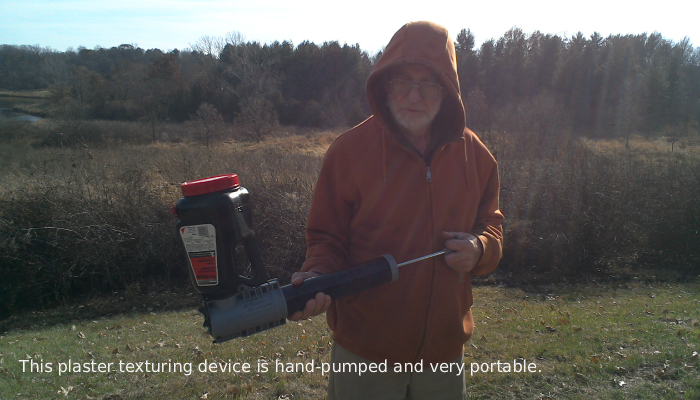A Winter Deer Repellent That Works

In past years I have tried deer repellent products to protect young trees and shrubs from being browsed over winter. One brand reeked of garlic and another of rotten eggs, and I’ve mixed up a couple of evil potions of my own. None of these worked very well – especially because they were short-lived and needed to be reapplied regularly.
Last November I had too many little arborvitae and winterberry to build big cages for, so I called Mark Vitosh, our District Forester (319-351-8886), who is also an active Bur Oak Land Trust member. Mark agreed that most deer repellents were pretty marginal, but he recalled that a Christmas tree grower had had rather good success with a repellent product called Plantskydd, which is essentially dried blood.
There were mixed reviews of this stuff online, and the negative comments were either ones that didn’t apply to my situation (for example – summer hostas), or ones I thought I could cope with (difficult to apply, clogged sprayers). The positive comments were what I wanted to hear (actually repels deer for three months). The specifications were that it had to dry on the plant for 24 hours without rain or freezing in order to not wash off. According to weather forecasts, this window of opportunity might be open for three more days. So I called Chief River Nursery in Wisconsin on November 29, and they had some to my door late the next day.
The product is dried blood, powdered with a trace of vegetable oil. When mixed with warm water it forms a foamy red slurry containing many small specks and pieces, which will clearly clot an ordinary garden sprayer. So I borrowed a friend’s device for applying texture to drywall with a thin plaster mixture.

These decorative arborvitae cultivars in town were deeply browsed by deer last winter.
Adjusting it to the medium-fine spray setting looked about right and it produced a coarse mist of blood product plus some small drop spatter, all of which could be aimed at the plant to be protected. I proceeded to spray 40 arborvitae and 40 winterberry, which were mostly around 2-3 feet tall. The coverage was light, nowhere near soaking the plant, but thorough from all the sides leaving no large gaps. The little reddish-brown spatters quickly oxidized to brown and became unnoticeable on either species.

A young sprayed arborvitae at end of winter, pole calibrated in feet. Note that all the delicate leaflets are intact.
Last winter, following this application, we had regular and repeated enough snow covers to encourage substantial deer browsing locally.
My deer were strongly attracted toward the young arborvitae, which looked like a green salad bar at browsing height. After every new little snowfall, there would be fresh tracks weaving between the little trees. But not a single arborvitae or winterberry showed a single bite when the last snow had melted in April. The product had worked exactly as advertised, including being effective the entire winter.
Good advice Mark. Thank you!
Tags: deer repellent, Lon Drake, Mark Vitosh

